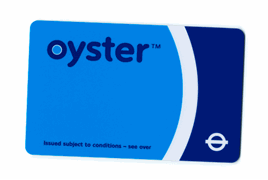 Read the peer review for this feature.
Read the peer review for this feature.
A Londoner travelling to work waves a debit card at a barrier. It opens. In the capital, paying for a Tube or bus journey really is that simple.
Yet a rail commuter from Basingstoke or Canterbury can’t even exchange a cardboard ticket for a piece of plastic, because the most basic smartcard technology is not yet available.
We’ve had Oyster since 2003. A smartcard has worked at every station and on every bus in Holland since 2008… and in Hong Kong for much longer. UK bus operators are also getting on with the job - they are way ahead of rail.
But the pace of change on trains - at least outside London - has been glacial. So why is the rail industry so far behind the curve, when proven technology is available off the shelf?
Because the children in the playground won’t play nicely together. The prefects have gone off to do their own thing. And the grown-ups are hiding in the staff room, instead of coming out on playground duty.
Most smartcards conform to a common standard, called ITSO. This ensures that card readers are capable of detecting products issued by a variety of different organisations. Interoperability is a buzzword. Oyster is a separate system.
“I would not touch ITSO with a bargepole, to be honest,” exclaims Shashi Verma, director of customer experience at Transport for London. “It suffers from being designed by committee at national government level 15 years ago. It is, in my view, unworkable.”
This is perhaps surprising - Verma is a member of the ITSO board. But his alternative system, using contactless bank cards, is gaining new users at the rate of 22,000 a day. It has been operating for just over a year, but already has seven million individual users - comfortably exceeding all other systems in the UK combined.
Most people expect that within a handful of years, most old-fashioned cardboard tickets with magnetic stripes will be replaced. But with what? Govia Thameslink Railway, London Midland, East Midlands Trains and c2c already offer their own smartcard systems, joined in 2016 by South West Trains. In Liverpool, Walrus is a success. In November, Nexus launched its equivalent for the North East. Manchester has struggled with Get Me There. And buses everywhere have been using smartcards for years.
Do we really need this plethora of different brands, run by often competing commercial interests, each operating in geographical silos? Isn’t that what the Government-promoted ITSO scheme was meant to circumvent? Or is it better to rely on local expertise, since the vast majority of public transport journeys are short and urban, within city regions?
“It’s basically a mess,” says Stephen Joseph, chief executive of Campaign for Better Transport. “This is a key part of the ‘Digital Railway’. It is in the doldrums, and proceeding at the pace of the slowest. That is down to a lack of leadership by the Department for Transport.”
Perhaps it is better led at a regional level? Transport for London certainly thinks so. So does the emerging Transport for the North.
“The only people who really understand how it all works are the operators,” contends Verma. “As soon as you take the design away from the operators and put it in the hands of a national body, you distance yourself from the customers. It becomes just another massive IT project.”
In a statement, the DfT responded: “Collaboration between Government, industry, transport groups and regional partners on a shared vision is the best approach to ensure the experience of smart ticketing is consistent. Millions are being invested in rolling out smart ticketing technology across the South East and we’re supporting nine city regions outside of London.”
But Verma adds: “If people think that smart ticketing is about taking a paper ticket and making it plastic, they are completely mistaken. Yet that is the core reason for the ticketing strategy nationally and in the regions. Look at what the North East or Transport for the North are trying to do: turn paper into plastic. Complete waste of time. It doesn’t add anything to the way customers access the system, and it doesn’t change the way operators run the system.
“The revolution that Oyster brought in was Pay As You Go. That liberates a huge number of people from the need to buy a ticket each time they travel. Commuters buy tickets once a week, once a month, once a year. They don’t need to interact with the ticketing system again until it runs out. But for everyone else the hurdle of having to buy a ticket every time they travel deters them from using the transport system.”











